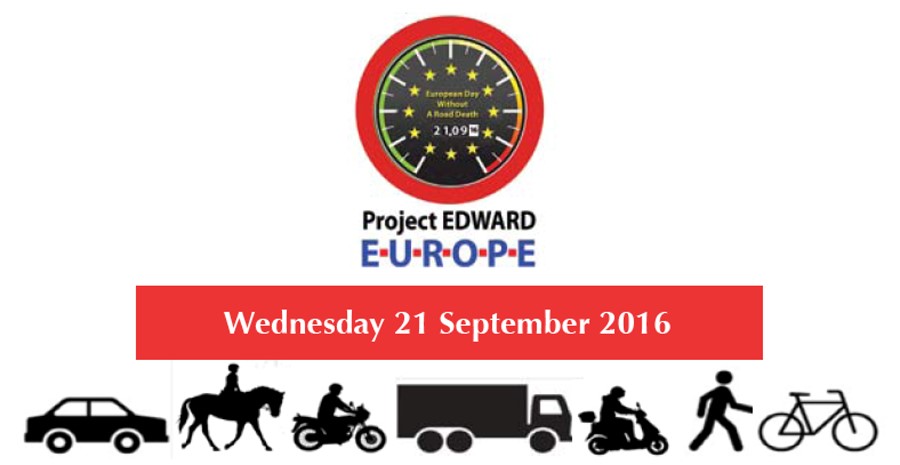European Day Without a Road Death

Vehicle History Expert Cartell.ie pledges to support the upcoming project EDWARD a project organised by TISPOL – the Traffic Police network in Europe. TISPOL’s target is that no one should die on the roads of Europe on Wednesday 21st September. An Garda Siochana and the Road Safety Authority are proudly supporting the project. 26,300 people were killed on the roads in Europe in 2015. On 21st September all road users are asked to think about how they use the roads.
TISPOL refers to drivers who are speeding, drink-driving, not wearing a seat belt, using the phone while driving, using vehicles they have not kept roadworthy, parking their cars on bicycle lanes, blocking pedestrian crossings, not turning on their lights or engaging in risky manoeuvres.
The TISPOL site also points out it isn’t just drivers who are at fault, it mentions cyclists too:
But it’s not just drivers who are at fault. Many cyclists and pedestrians increase their risk levels by choosing to ignore the rules or look for risky short cuts. In the days leading up to the Project EDWARD day, we want all road users to think – even for a few short minutes – about the risks they face, the risks they may pose to others and how they can go about reducing those risks.”
The RSA says:
Road Safety is a shared responsibility, just as our roads are a shared space. None of us has a right to behave in a way that endangers others. You may think that it’s ok to drive a little bit above the speed limit, or to just have a couple of drinks and drive home. But the tragic reality is that these actions could have serious and devastating consequences for others.”
You can make the pledge on the TISPOL site. Cartell.ie has pledged that it will:
- Remind my family, friends and colleagues to take extra care on the roads.
- Put my lights on for safety.
- Drive as safely as I can and follow the rules when behind the wheel or riding a motorbike or bicycle.
- Be extra vigilant and attentive to the needs of pedestrians, cyclists, children, older people and horse riders.
- Drive at speeds that are both legal and safe.
- Pay particular attention when driving near schools, and where there are lots of children.
- Never drive after drinking alcohol or taking drugs/medicines that could impair safety.
- Look as far ahead as possible and not tailgate other drivers
- Always wear my seat belt and ensure that everyone with me wears theirs.
- Not use my mobile phone while driving.
- Ensuring I am not distracted by anything inside or outside the car, or inside my head.
- Set a good example to my passengers by driving calmly and safely.